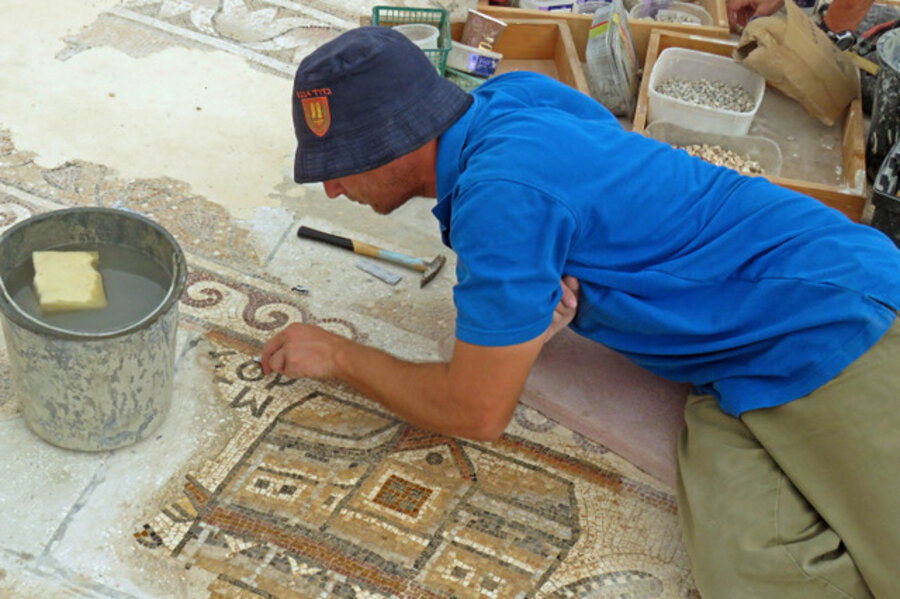Why a rare Egyptian mosaic is going on display in an industrial park in Israel
Loading...
A multi-colored mosaic showing an ancient Egyptian settlement is going on display Wednesday in an unlikely location – a parking lot in Israel.
The mosaic – made of some 17 tile colors — shows a complex map of streets and buildings in ancient Egypt, archaeologists from the Israel Antiquities Authority (IAA) said on Tuesday. A Greek inscription suggests the map depicts the settlement of Chortaso, Egypt, where Habakkuk, a prophet in the Hebrew Bible, was once buried, the website LiveScience reports.
Dating back some 1,500 years to the Byzantine period, the mosaic once sat on a church floor, the archaeologists said in a statement.
Now it rests in the modern Israeli city of Kiryat Gat (also spelled Quiryat Gat), in an industrial park. The unusual discovery was made two years ago with the help of area school children. The mosaic was temporarily removed from the park for restoration.
The archaeologists say the discovery may yield some clues about who once lived in that location.
“The appearance of this Egyptian city on the floor of the public building in Qiryat Gat might allude to the origin of the church's congregation,” Israeli archaeologists Sa'ar Ganor and Rina Avner said in the statement.
The church itself is long-gone, Mr. Ganor added, noted that what had been preserved represented a very significant find.
“Two sections of the mosaic were preserved,” according to the IAA release. “Animals, such as a rooster, deer, and birds – and a special goblet with red fruits – are portrayed on one part of the pavement.... The investment in the raw materials and their quality are the best ever discovered in Israel.”
A second relic also found in Kiryat Gat depicts a Nile River landscape with a boat with a rolled-up sail and three dimensional buildings, the archaeologists said, noting the level of detail the artist used to depict the buildings.
Wednesday’s public unveiling is part of a larger “Factories from Within” festival at the industrial park. Held during the Jewish holiday of Sukkot, the festival will feature live theater and music performed in unusual factory settings.
But there’s also a mystery surrounding the Byzantine mosaic, LiveScience notes. While Christian traditions place Habakkuk’s burial site in Chortaso, his final resting site is unknown, with Israel and Iran both claiming to hold the tomb of the minor prophet.
IAA spokeswoman Yoli Shwartz called the mosaic “extraordinary,” saying the society wanted to reveal it to the public in the unusual place it was discovered.







